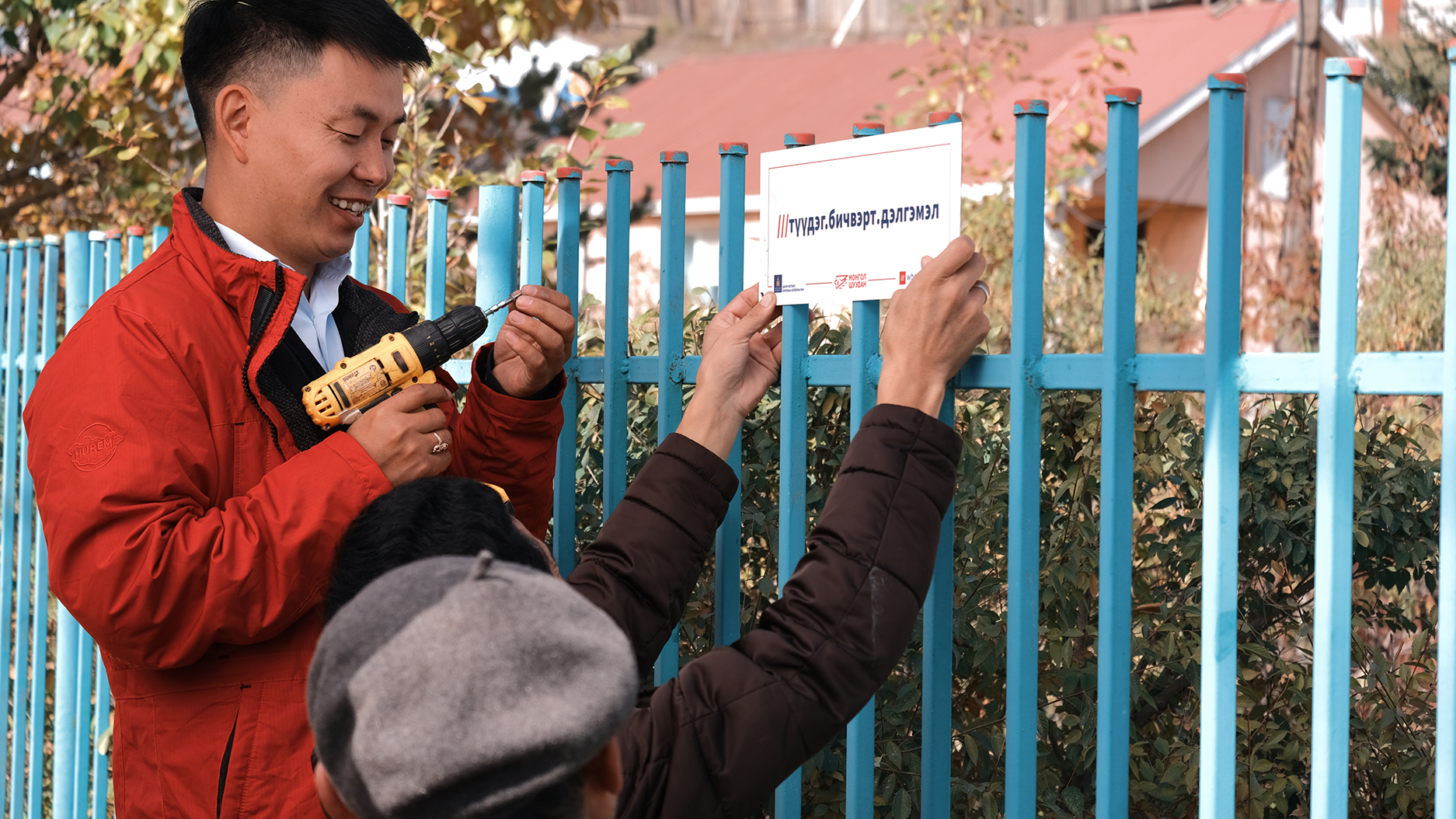
Government of Mongolia & Mongol Post embrace what3words for more projects across infrastructure, safety & e-commerce
Innovative location technology what3words continues to expand its ecosystem in Mongolia, partnering with the Mongolian Ministry of Digital Development & Communications and Mongol Post on new projects supporting infrastructure, safety and e-commerce in the region.
On Monday 6th November, Uchral Nyam-Osor, Minister of Digital Development and Communications, Ankhbaatar Badamrai, CEO of Mongol Post, Tsogt-Od Tserenbat, Representative of 18th Khoroo (subdistrict), Undra Janabazar, Partnerships Manager at what3words, and representatives from NEMA attended a ceremony marking the official start of a project seeing over 2,000 bespoke signs distributed to residents of the Sukhbaatar district. The benefit of these signs will be twofold; building awareness amongst residents of their easily communicable and accurate 3 word addresses, and optimising routes and processes for both e-commerce couriers and emergency response teams.
what3words is revolutionising the way the world communicates location. It has divided the world into a grid of 3 metre x 3 metre squares and given each square a unique combination of 3 random words: a what3words address. Now, every apartment building entrance, parking space and ger has its own what3words address. For example ///universes.gardens.magically identifies the entrance of what3words’ Ulaanbaatar office.
what3words has proved to be particularly useful in overcoming some of the addressing challenges that stem from Mongolia’s unique infrastructure. It’s the second largest landlocked country in the world, and also one of the most sparsely populated, with a semi-nomadic population. In many parts of the country, there is little to no street addressing. Directions to a specific address are often only achieved using descriptive landmarks – “past the crossroads, opposite the gas station” – frustrating everyday citizens, and, on a larger scale, potentially holding back the development of businesses and government.
The technology works offline, making it ideal for use in areas with an unreliable data connection and is available in 60 languages to date, including Mongolian, allowing more than half of the world’s population to use it in their native tongue. The app is free to download for both iOS and Android devices and can also be used via the online map at what3words.com .
In another major project, the E-Mongolia Academy has added a new safety feature to the e-Mongolia app, “e-Kids” that utilises what3words. Children are now able to send their current what3words address to parents and guardians with the click of a button, providing parents with peace of mind that their children are exactly where they are supposed to be. Thanks to a partnership with Unitel, Mobicom, Skytel, GMobile, and ONDO telecommunications companies, no data is needed to use e-Mongolia e-Kids.
Chris Sheldrick, Co-founder & CEO of what3words commented: ‘It’s been amazing to see what3words increasingly become part of everyday life in Mongolia. We are extremely excited by both the innovative nature and the pace at which our partnerships with the Ministry for Digital Development and Communications, and Mongol Post have been expanding and we’re really excited to continue our growth in the country. ’
The what3words ecosystem in Mongolia continues to grow. Expert travel guide, Lonely Planet, has added what3words addresses to its Mongolia guide, offering travellers a world of adventures, unexpected encounters and authentic experiences. The Niislel guide, the capital city’s leading guidebook, the Khovd Province Tourism Board domestic guidebooks, and the Mongolian Travel Passport Guide all use what3words addresses to help travellers experience the best of the country. Airbnb partnered with what3words to list stays with Mongolian nomads, such as the Dukha reindeer herders at their forest camp where there aren’t any street addresses to use to find them.



